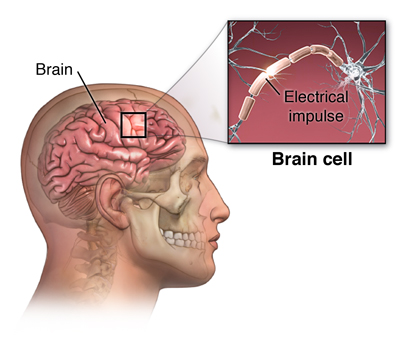Seizure disorders, commonly referred to as epilepsy, are neurological conditions characterized by abnormal electrical activity in the brain. This results in sudden and uncontrolled episodes, known as seizures, which can manifest in various forms depending on the brain region affected. Seizure disorders can be disruptive to daily life, but with proper understanding, diagnosis, and treatment, many individuals are able to manage their condition effectively. In this article, we will explore the different types of seizure disorders, their causes, symptoms, diagnostic processes, and available treatment options.

What Are Seizure Disorders?
A seizure disorder occurs when there is a sudden, abnormal surge of electrical activity in the brain, disrupting normal brain function. These disruptions can affect movement, behavior, speech, and even consciousness. Seizure disorders are not a single condition but rather a group of conditions, with epilepsy being the most common and well-known type.
Seizures: The Symptom of a Disorder
Seizures are classified as either focal (partial) or generalized, based on how the electrical disturbance spreads in the brain.
- Focal Seizures (Partial Seizures): These occur when the abnormal electrical activity begins in one area of the brain. Depending on the affected region, symptoms may include muscle twitching, unusual sensations, or altered consciousness.
- Generalized Seizures: These involve both sides of the brain from the onset and can result in a loss of consciousness, convulsions, or muscle rigidity.
Seizures can range from mild and brief to severe and prolonged, requiring medical intervention.
Causes of Seizure Disorders
Seizure disorders can be caused by a variety of factors. In many cases, the exact cause remains unclear, but there are several known triggers and underlying conditions that contribute to their onset.
1. Genetic Factors
Some types of epilepsy are inherited, and genetic mutations can make certain individuals more prone to developing seizure disorders. Family history plays a significant role in genetic predisposition to epilepsy.
2. Brain Injury
Head injuries resulting from trauma, accidents, or strokes can damage the brain and increase the risk of developing seizures. Traumatic brain injury (TBI) is a leading cause of seizure disorders in both children and adults.
3. Infections
Infections that affect the brain, such as meningitis or encephalitis, can lead to seizures. These conditions can cause inflammation and disrupt normal brain activity.
4. Brain Tumors
Abnormal growths in the brain, such as tumors, can interfere with normal brain function, resulting in seizures. Depending on the tumor’s size and location, it may put pressure on nearby brain tissue.
5. Neurological Conditions
Conditions such as cerebral palsy, Alzheimer’s disease, or other neurological disorders can increase the likelihood of seizure development due to changes in the brain’s structure or function.
6. Alcohol and Drug Use
Excessive alcohol consumption or the abuse of drugs (particularly stimulants) can trigger seizures. Withdrawal from alcohol or certain medications can also provoke seizure activity.
Symptoms of Seizure Disorders
The symptoms of seizure disorders vary depending on the type of seizure. Common signs include:
- Uncontrolled Movements: Jerking or twitching of the arms, legs, or face, often in rhythmic patterns.
- Loss of Consciousness: The person may lose awareness of their surroundings or appear to “blank out.”
- Staring Episodes: A person may appear to be staring blankly and unresponsive for a brief period.
- Aura: Some individuals experience a sensation or warning sign, known as an aura, before a seizure. This could include a strange taste, smell, or feeling of déjà vu.
- Memory Loss: After a seizure, some individuals experience confusion or memory loss regarding the event itself.
The severity of symptoms can vary, and in some cases, seizures may occur without any outward signs.
Diagnosing Seizure Disorders
Accurately diagnosing a seizure disorder involves a combination of medical history review, neurological examinations, and specialized diagnostic tests.
1. Medical History and Physical Exam
A comprehensive evaluation of the patient’s symptoms, family history, and past medical conditions is the first step in diagnosing a seizure disorder. A neurologist will often conduct a physical and neurological exam to assess reflexes, motor skills, and cognitive function.
2. Electroencephalogram (EEG)
An EEG is the most common test used to diagnose seizure disorders. It measures the electrical activity in the brain and can help identify abnormal patterns associated with seizures. During an EEG, electrodes are placed on the scalp to detect brainwave patterns.
3. Magnetic Resonance Imaging (MRI)
An MRI can provide detailed images of the brain, helping to detect structural abnormalities, tumors, or areas of brain injury that may be causing seizures.
4. Computed Tomography (CT) Scan
A CT scan may be used to provide cross-sectional images of the brain to identify abnormalities such as bleeding or structural damage that could be triggering seizures.
5. Blood Tests
Blood tests can help identify underlying conditions, such as infections or metabolic imbalances, that may be contributing to the development of seizures.
Treatment Options for Seizure Disorders
While there is no cure for many seizure disorders, effective treatments are available to help manage and control seizures. Treatment plans are typically tailored to the individual based on the type of seizures, their severity, and underlying causes.
1. Anti-Seizure Medications
Anti-seizure medications (also called antiepileptic drugs or AEDs) are the primary treatment for seizure disorders. Common medications include:
- Phenytoin: Often used for controlling generalized seizures.
- Valproic Acid: Effective for multiple types of seizures, including generalized tonic-clonic seizures.
- Lamotrigine: Used for focal seizures and some generalized seizures.
- Levetiracetam: A newer drug used to treat a variety of seizures.
2. Surgical Treatments
In cases where medications are ineffective, surgery may be considered. Surgical options include:
- Resective Surgery: Removal of the area of the brain where seizures originate.
- Vagus Nerve Stimulation (VNS): A device implanted under the skin that sends electrical impulses to the vagus nerve to reduce seizure frequency.
- Responsive Neurostimulation (RNS): A device implanted in the brain that detects abnormal brain activity and sends electrical signals to prevent seizures.
3. Lifestyle Adjustments
Managing a seizure disorder often involves lifestyle modifications to minimize seizure triggers. This can include:
- Maintaining a consistent sleep schedule.
- Avoiding alcohol or recreational drugs.
- Managing stress through relaxation techniques.
4. Dietary Therapy
In some cases, a high-fat, low-carbohydrate diet known as the ketogenic diet may be prescribed. This diet has been shown to help reduce the frequency of seizures in certain individuals, particularly in children with refractory epilepsy.
Living with Seizure Disorder
Individuals living with a seizure disorder can lead fulfilling lives, but it is essential to have a strong support system, effective treatment plan, and regular monitoring by healthcare professionals. Education on seizure first aid, creating a safe environment, and understanding the psychological impact of living with seizures can greatly improve quality of life.
Seizure disorders are complex conditions that can impact individuals in various ways. However, with early diagnosis, proper treatment, and lifestyle adjustments, seizures can often be well-managed, allowing individuals to live normal, active lives. A comprehensive approach involving medications, lifestyle changes, and, in some cases, surgical intervention can provide substantial relief and reduce the frequency and severity of seizures. By staying informed and working closely with healthcare professionals, individuals with seizure disorders can effectively manage their condition and minimize its impact on their daily lives.

